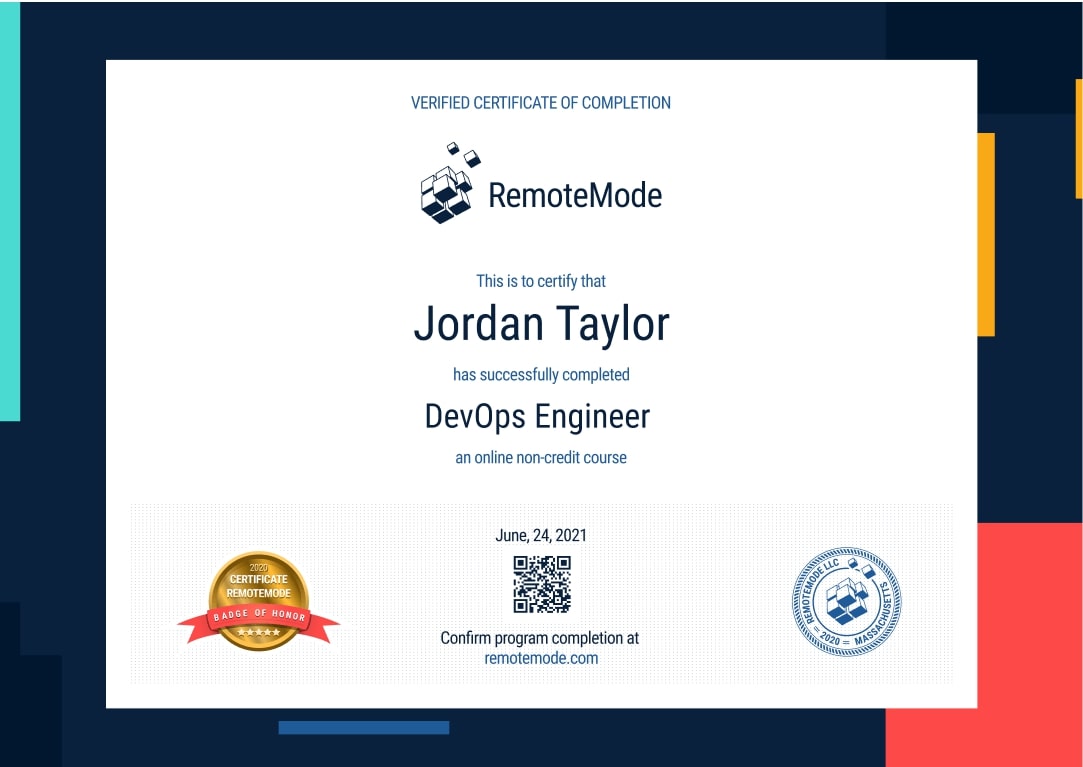Become a Python Developer
Work with and learn one of the most powerful programming languages created. Write and code applications, or analyze and visualize data.
- 7-month long course
- 291 lessons
- 6 hours a week
- 193 hours



Mission Forecast for Python Developers
Landing Zone
Python has been around since nearly the conception of programming. It has an expansive userbase and is being currently used for sections of AI and machine learning. Python is also often used to organize, analyze and visualize data. Python is one of the core languages that is learned and nearly every major tech business uses Python to some degree. Developer jobs will see one of the largest increases and the U.S. Bureau of Labor Statistics is expecting a +22% growth by 2030.
Mission Objective (Who’s Hiring Right Now)

Python Developer Overview
Python is commonly used to build web apps, analyze data, create AI and machine learning programs, automation applications, and scalable enterprise applications.
- + 7-month long course
- + 6 hours a week, go at your own pace
- + 291 on-demand lessons
- + 193 Hours of Learning Materials
- + Receive a certificate confirming your training
- + Participate in real-life Virtual Lab projects
- Develop, Implement, and launch different projects.
- Write code for different applications.
- Design your own programming tools.
- Analyze data and create helpful visuals.
- Work with a team of developers.
Prepare for Liftoff
Python 3
These lessons briefly and informally introduce the essential features and concepts of the Python 3 programming language.
Part 1 of 6: Getting Started
Python 3 is a high-level programming language with dynamic typing and sophisticated syntax that makes it highly ideal for scripting and rapid application development. It uses advanced data structure and offers a convenient approach to object-oriented programming. It also works as an extension language to customizable applications.
Part 2 of 6: Statements
This lesson discusses the basic scope of statements used in the Python 3 programming language.
Statements are instructions that Python interpreters execute as part of a block of code. Statements are subdivided into numerous expressions of constructs, the basics of which are discussed in this module:
- If and Else statements
- For Statements
- While Statements
- Try Statements
- Assignment Statements
- Pass Statement
- Break and Continue Statements
- Range function
Part 3 of 6: Data
In this chapter, Python 3 data structures and data types are discussed. This brief introduction elaborates what a data structure is, alongside different data types.
Python developers use data structures as the foundation of their programs, which offer a specific and efficient data organization. Data types, on the other hand, describe data with shared properties.
Built-in Data Types:
- Integer
- Float
- Function
- String
- Complex
Built-in Data Structures:
- Dictionary
- List
- Tuple
Part 4 of 6: Functions and Classes
In this chapter, Python 3 classes and functions are further elaborated, including some examples of their applications. This lesson also incorporates examples of classes and functions, along with objects and instances specific to the Python 3 language.
Classes are templates for objects or concepts that describe object behavior, while functions refer to the ways of manipulating objects with the use of input/s and the goal of producing an output.
Part 5 of 6: Programming Tools
Python 3 is known for having a simple syntax and comparably less coding as opposed to other programming languages. This, alongside being free and used by major global corporations, makes Python an attractive skill to be learned by programmers.
Python 3 programming tools include IDEs and Code Editors that are equally useful and functional in software development. This chapter discusses the built-in programming tools found in Python 3:
Integrated Development Environment (IDEs):
- Eclipse + PyDev
- Visual Studio
- PyCharm
- Spyder
- Thonny
Code Editors:
- Sublime Text
- Atom
- GNU Emacs
- Vi/Vim
- Visual Studio Code
Part 6 of 6: Modules, JSON, and Algorithms
This lesson identifies the uses of Python modules, JSON, and algorithms.
A module refers to the organizational unit of a code that arbitrarily names Python objects. Modules can be bound and referenced for better organization of the code. It can determine functions, variables, and classes.
Javascript Object Notation is a standardized format that sends data as text over a network. It presents objects as name or value pairs. It is commonly used in many APIs and Databases since it allows for easy reading from both machines and humans.
An algorithm is a set-by-step instruction that must be executed in a particular arrangement to arrive at a desired result. Generally, algorithms are separate from underlying languages, which means that it can be imposed in more than one programming language. This lesson discusses several important algorithms such as:
- Search
- Sort
- Insert
- Update
- Delete

Mission Control
- Stay focused with a mentor’s help and support
- Build a real portfolio with Virtual Lab Projects
- Compete with classmates in a virtual classroom
- Measure your progress with the Activity Tracking Log
- Make sure you get the job with resume help and interview assistance
In Collaboration with
Chart Your Trajectory (291 videos 93 hours)
Certificate of Completion
- Receive a certificate recognized by prevalent companies confirming your training
- Complete real projects in Virtual Labs
- Go at your own pace, learn your way
- Access course videos and materials 24 hours a day
- Take practical quizzes to keep you up to speed
- Classes created and mentored by industry leaders

Grow into a Python Developer
With one of the most powerful programming languages ever created, work on some next-level projects like A.I. and machine learning. Python is used in a multitude of different ways to create visual and usable data.
Program Forecast
- 7 months long, 6 hours per week
- 291 lessons in 193 hours
- Learn at your own pace
Virtual Lab
- Real Projects
- Create a working portfolio
- Receive expert feedback and mentoring
Career Services
- Interview preparation
- Resumé assistance
- Help with LinkedIn networking
Request More Information
View pricing and financing options